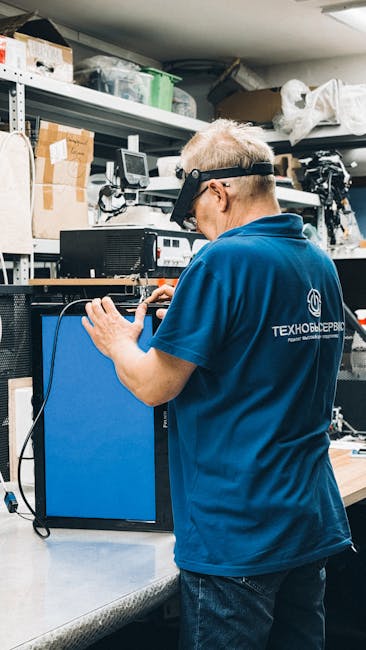Antena Sudah Naik Turun Berapa Kali, Tapi Tetap Tidak Ada Sinyal? (Signal Troubleshoot!)

Antena Sudah Naik Turun Berapa Kali, Tapi Tetap Tidak Ada Sinyal? (Signal Troubleshoot!)
Frustration. We've all been there. You've diligently adjusted your antenna, twisting and turning, extending and retracting, all in the desperate hope of coaxing a single bar of signal strength out of thin air. "Antena sudah naik turun berapa kali, tapi tetap tidak ada sinyal?" (How many times have I raised and lowered the antenna, but still no signal?) This lament echoes across households from bustling cities to remote villages. But why does this happen? Is your antenna cursed? Is the universe conspiring against your Netflix binge?
Before you throw your device (or antenna) out the window, let's dive into the fascinating, and sometimes infuriating, world of signal reception. We'll explore the common culprits behind weak or non-existent signals, demystify the technology, and offer some practical solutions to get you back online. Think of this as your comprehensive guide to vanquishing signal demons!
The Usual Suspects: Why Your Signal Isn't Cooperating

The reasons behind poor signal reception are as varied as the devices we use to connect. Let's examine some of the most common offenders:
- Distance from the Source: This is the most fundamental factor. Radio waves, like any form of energy, weaken as they travel. The further you are from the cell tower (for mobile signals) or broadcasting station (for TV antennas), the weaker the signal will be. Imagine shouting – the person closest to you hears you best. The same principle applies here.
- Obstructions, Obstructions, Obstructions!: Think of radio waves as light. Just as light cannot pass through opaque objects, radio waves struggle to penetrate dense materials like concrete, metal, and even thick foliage. Buildings, hills, trees – they all act as signal blockers. This is why you might have a strong signal outdoors but a weak one inside your house.
- Interference: The airwaves are a crowded place. Other electronic devices, like microwave ovens, power lines, and even other antennas, can generate electromagnetic interference that disrupts the signal. Think of it as static on your radio, but for your data connection.
- Antenna Placement & Orientation: This is where your "naik turun" (up and down) dance comes in. The placement and orientation of your antenna are crucial. An antenna pointed in the wrong direction or positioned in a bad spot (e.g., behind a large metal object) will perform poorly.
- Antenna Quality & Type: Not all antennas are created equal. A cheap, poorly designed antenna will struggle to pick up weak signals. The type of antenna also matters. An indoor antenna might be insufficient for a location far from the signal source, requiring an outdoor antenna instead.
- Network Congestion: Even if you have a strong signal, your internet speed can be slow if the network is congested. This is like rush hour on the highway – lots of cars (data) trying to get through at the same time, causing delays.
- Device Issues: Sometimes, the problem isn't the signal itself, but your device. A faulty modem, router, or phone can cause connectivity problems. Software glitches or outdated drivers can also interfere with signal reception.
- Weather Conditions: Believe it or not, weather can affect signal propagation. Heavy rain, snow, and even humidity can attenuate radio waves.
Deciphering the Technical Jargon: Understanding Signal Strength

Before we start troubleshooting, let's briefly touch upon some technical terms you might encounter:
- Signal Strength (dBm): Measured in decibel-milliwatts (dBm), this indicates the power of the received signal. The closer the value is to 0 dBm, the stronger the signal. Generally, -50 dBm to -70 dBm is considered good, -70 dBm to -85 dBm is acceptable, and anything below -85 dBm is weak.
- Signal Quality (SINR/SNR): Signal-to-Interference-plus-Noise Ratio (SINR) or Signal-to-Noise Ratio (SNR) measures the strength of the desired signal relative to the background noise and interference. A higher SINR/SNR indicates a cleaner and more reliable signal.
- Frequency Bands: Different technologies (2G, 3G, 4G, 5G, Wi-Fi) operate on different frequency bands. Knowing which bands your device uses and which bands are available in your area is crucial for selecting the right antenna (if needed).
Troubleshooting Your Signal Woes: A Practical Guide

Now, for the moment of truth. Here's a step-by-step guide to diagnosing and fixing your signal problems:
- Check Your Device's Signal Strength Indicator: Start by looking at the signal bars on your phone or the signal strength indicator in your modem/router's interface. This gives you a basic indication of the signal level. Most smartphones also allow you to see the dBm reading, which is a more accurate measurement. Look for it in your phone's settings, often under "About Phone" or "Network Information."
- Move Around: Walk around your home or office, observing the signal strength in different locations. Pay attention to areas near windows or exterior walls, as these often offer better reception. Note where the signal is strongest.
- Adjust Your Antenna (Again!): This is where your "naik turun" skills come back into play, but with a more strategic approach.
- For Mobile Antennas: Try different orientations. Small adjustments can make a big difference. Consider using an external antenna, especially if you are far from the cell tower.
- For TV Antennas: Use a website or app like AntennaWeb (in the US) to determine the direction of the broadcasting towers. Point your antenna accordingly. Experiment with height; often, a higher antenna placement provides a clearer signal.
- Secure the Connection: Ensure the cable connecting your antenna to your device is properly connected and not damaged. A loose connection can significantly degrade the signal.
- Identify and Eliminate Obstructions: Look for potential signal blockers between your antenna and the signal source. Can you move your antenna to a location with a clearer line of sight? Can you trim trees or move furniture that might be interfering with the signal?
- Minimize Interference: Turn off any electronic devices that might be causing interference, such as microwave ovens or Bluetooth devices. Test whether this improves the signal.
- Check Your Cables and Connectors: Ensure all cables (coaxial, Ethernet, etc.) are in good condition and properly connected. Damaged cables or loose connectors can significantly weaken the signal. Consider using a high-quality coaxial cable for your antenna to minimize signal loss.
- Reboot Your Devices: It sounds simple, but sometimes a quick reboot of your modem, router, or phone can resolve connectivity issues. This clears temporary glitches and refreshes the network connection.
- Update Your Device's Software: Make sure your devices are running the latest software updates. These updates often include bug fixes and performance improvements that can enhance signal reception.
- Check for Network Outages: Contact your internet service provider (ISP) or mobile carrier to check for any reported outages in your area. Sometimes, the problem isn't your equipment, but a network issue beyond your control.
- Consider a Signal Booster/Repeater: If you've tried everything else and still have a weak signal, a signal booster or repeater might be the solution. These devices amplify the signal, extending its range and improving reception. There are different types of boosters for cellular, Wi-Fi, and TV signals. Do your research to find the right one for your needs.
- Factory Reset (Last Resort): If all else fails, consider performing a factory reset on your modem, router, or phone. This will erase all your settings and restore the device to its original factory state. Be sure to back up your data before doing this.
The Future of Connectivity: Innovation on the Horizon

While troubleshooting existing signal problems is important, it's also worth looking ahead to the future of connectivity. Innovation is constantly pushing the boundaries of wireless technology, promising faster speeds, greater coverage, and more reliable connections.
- 5G and Beyond: The rollout of 5G networks is bringing significant improvements in speed and latency. As 5G infrastructure expands, we can expect to see better signal coverage and performance in more areas. Future generations of mobile technology (6G and beyond) will further enhance connectivity, offering even faster speeds and more advanced features.
- Wi-Fi 6 and Wi-Fi 6E: These newer Wi-Fi standards offer faster speeds, improved capacity, and better performance in congested environments. Upgrading to a Wi-Fi 6 or Wi-Fi 6E router can significantly improve your Wi-Fi experience.
- Low Earth Orbit (LEO) Satellites: Companies like SpaceX's Starlink and OneWeb are deploying constellations of LEO satellites to provide internet access to underserved areas. This technology has the potential to bridge the digital divide and bring connectivity to even the most remote locations.
- Mesh Networks: Mesh Wi-Fi systems create a network of interconnected nodes that provide seamless coverage throughout your home or office. These systems are particularly useful for large spaces or areas with weak Wi-Fi signals.
Conclusion: From Frustration to Fantastic Signals

So, the next time you find yourself lamenting, "Antena sudah naik turun berapa kali, tapi tetap tidak ada sinyal?", remember this guide. With a little knowledge, patience, and some strategic troubleshooting, you can conquer your signal woes and enjoy a reliable connection. Don't be afraid to experiment, investigate, and embrace the technological adventure. Happy connecting!